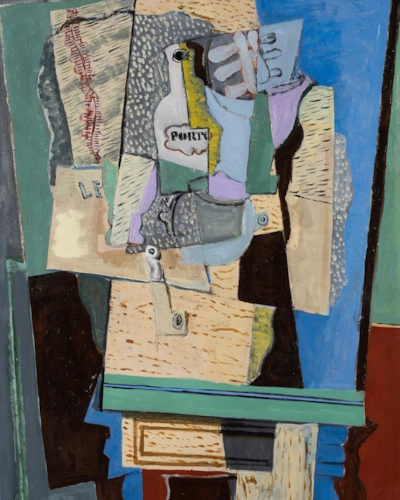Henry Moore
(1898 - 1986)
Two seated women in an interior
17.8 x 21.3 cm (7 x 8 ³/₈ inches)
Henry Moore
biography
Moore was born at Castleford, Yorkshire, to Mary Baker and Raymond Spencer Moore, an Irish coal miner. He was the seventh of eight children in a family often struggling with poverty. In elementary school he began modelling in clay and carving in wood.
In 1916, Moore became a teacher at Castleford Grammar School. He served in the army 1917–19, the youngest man in the Prince of Wales's Own Civil Service Rifles regiment. In 1919 Moore continued his education at Leeds School of Art, where he met Barbara Hepworth and had access to modernist works in the collection of Sir Michael Sadler, the University Vice-Chancellor, profoundly effecting his artistic development.
Moore received a scholarship to the Royal College of Art which he attended 1921–4. While in London, he expanded his knowledge of primitive sculpture and art. Fused with the influence of Constantin Brâncuși, Jacob Epstein, Henri Gaudier-Brzeska and Frank Dobson, this led him to the method of direct carving, in which imperfections in the material and marks left by tools became part of the finished sculpture.
In 1924, Moore spent six months travelling in Northern Italy and Paris. On returning to London, he undertook a seven-year teaching role at the R.C.A. and fulfilled his first public commission for London Underground’s headquarters, West Wind (1928-9), carved from Portland stone. In July 1929, Moore married Irina Radetsky, and the couple moved to Hampstead, where a small colony of avant-garde artists – Hepworth, Cecil Stephenson and Herbert Read – were taking root. Moore took up a post as Head of the Department of Sculpture at Chelsea School of Art in 1932.
Along with Hepworth, Moore was part of 'The Seven and Five Society', who developed toward abstract art, influenced by their contact with Pablo Picasso, Georges Braque, Jean Arp and Alberto Giacometti. Moore flirted with Surrealism, joining Paul Nash’s modern art movement, 'Unit One', in 1933. The two men helped organise the International Surrealist Exhibition, which took place in London in 1936.
At the outbreak of the Second World War, Moore resigned his teaching post and started producing drawings commissioned by the War Artists’ Advisory Committee. Moore and Radetsky moved out of London to live in a farmhouse called Hoglands in Hertfordshire, after bomb shrapnel hit their Hampstead home in September 1940. Despite this, Moore's sense of England emerging undefeated from siege led to his focus on pieces characterised by endurance and continuity.
In 1943, Moore received a commission to carve a Madonna and Child for the Church of St. Matthew, Northampton, which was the first in an important series of family-group sculptures. Radetsky gave birth to their daughter, Mary Moore, in March 1946, and Moore had a retrospective at the Museum of Modern Art in New York in the same year. Family Group of 1950, was commissioned for a secondary school in the town of Stevenage, became his first large-scale public bronze.
Moore began to receive increasingly significant commissions in the 1950s, including a Reclining Figure for the UNESCO building in Paris in 1958. On the campus of the University of Chicago in December 1967, 25 years to the minute after the team of physicists led by Enrico Fermi achieved the first controlled, self-sustaining nuclear chain reaction, Moore's Nuclear Energy was unveiled in the rackets court beneath which the experiments had taken place. Although often interpreted as a mushroom cloud, Moore intended that viewers "go around [the sculpture], looking out through the open spaces, and that they may have a feeling of being in a cathedral."
Moore’s forms are usually abstractions of the human figure, typically depicting mother-and-child or reclining bodies, pierced or containing hollow spaces. His works are usually suggestive of the female body, apart from his phase in the 1950s when he sculpted family groups. Many interpreters liken the undulating form of his reclining figures to the landscape and hills of his birthplace.
Seen as the voice of British Modernism and sculpture, Moore has been celebrated in major retrospectives around the world, notably a prominent exhibition in summer 1972 overlooking Florence. He won prizes at Venice 1948, São Paulo 1953 and Pittsburgh 1958, receiving Hon. A.R.I.B.A. 1948 and many similar honours; C.H. 1955, O.M. 1963. By the late 1970s, there were some forty exhibitions a year featuring his work, and commissions, including Knife Edge Two Piece (1962) near the Houses of Parliament and Large Two Forms in the forecourt of the German Chancellery in Bonn, Germany. Moore died at 88 in his home of Much Hadham, Hertfordshire.
Henry Moore
biography













